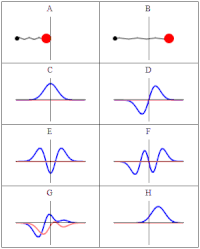
Photo from wikipedia
Abstract The size-dependent longitudinal and torsional dynamic problems for small-scaled rods are modeled by utilizing an integral formula of two-phase nonlocal theory. The energies diffused from surrounding particles in a… Click to show full abstract
Abstract The size-dependent longitudinal and torsional dynamic problems for small-scaled rods are modeled by utilizing an integral formula of two-phase nonlocal theory. The energies diffused from surrounding particles in a reference domain can be taken into account in the rod model by using the two-phase nonlocal theory, which depends on the internal characteristic length via convolution integrals over exponential kernel. Unlike the nonlocal differential models, which are inconsistent as for some rod- and beam-type problems, the developed nonlocal integral models are both self-consistent and well-posed. The governing equations and boundary conditions for the longitudinal and torsional dynamics of the nonlocal rods are deduced by employing the Hamilton principle. By reducing the complicated integro-differential equations to a fourth order differential equation with mixed boundary conditions, the asymptotic solutions of predicting the longitudinal and torsional frequencies are derived for the two-phase nonlocal rod under clamped-clamped and clamped-free boundary conditions. The closed-form solutions for longitudinal and torsional dispersion relations are obtained. The single-walled carbon nanotube, single layer graphene sheet and silicon are chosen as nanoscaled rods to study the size-dependent effect on the dispersion relation and vibration frequencies, which can show a good agreement with molecular dynamics results or experimental data.
Journal Title: International Journal of Mechanical Sciences
Year Published: 2017
Link to full text (if available)
Share on Social Media: Sign Up to like & get
recommendations!